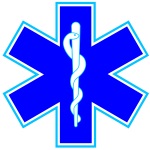Head Injuries: Difference between revisions
From Protocopedia
No edit summary |
No edit summary |
||
| Line 3: | Line 3: | ||
[[Initial Trauma Assessment and Care|INITIAL TRAUMA CARE]], (2.02) [[ | [[Initial Trauma Assessment and Care|INITIAL TRAUMA CARE]], (2.02) [[Oxygen|OXYGEN]] @ 100% via NRB mask or hyperventilate with BVM. | ||
* Elevate head and shoulders 15 - 30 degrees if systolic BP > 90 mm Hg. | * Elevate head and shoulders 15 - 30 degrees if systolic BP > 90 mm Hg. | ||
* Refer to [[Altered Mental Status (AMS)|ALTERED MENTAL STATUS PRACTICE PARAMETER]] (5.03). | * Refer to [[Altered Mental Status (AMS)|ALTERED MENTAL STATUS PRACTICE PARAMETER]] (5.03). | ||
Revision as of 14:30, 24 April 2020
Section 6 - TRAUMA
6.07 HEAD INJURIES
INITIAL TRAUMA CARE, (2.02) OXYGEN @ 100% via NRB mask or hyperventilate with BVM.
- Elevate head and shoulders 15 - 30 degrees if systolic BP > 90 mm Hg.
- Refer to ALTERED MENTAL STATUS PRACTICE PARAMETER (5.03).
- If Combative refer to DISSOCIATIVE ANESTHETIC (2.05)
- KETAMINE (KETALAR) 2 mg/kg IVP or IN OR 4 mg/kg IM x 1 dose
- AND / OR
- MORPHINE - Initial dose 2-5 mg IVP, IM or IN followed by 2 mg doses. (Max 15 mg)
OTHER OPTIONS
- MIDAZOLAM (Versed) - Initial dose 2-5mg IV or IN then 2 mg every 30 seconds to 1 minute.
- (Max dose 15 mg) in the intubated patient. IM .07-.08 mg/kg with onset in approximately 15 minutes. IM injection requires immediate IV access upon sedation.
- DIAZEPAM (VALIUM) 2 - 20 mg SLOW IVP or IM to desired effect.
- These drugs may be given in combination for maximum effectiveness.
- Ensure that Pulse Oximeter is in place.
- Ensure that BVM and ROMAZICON and/or NARCAN are readily available.
